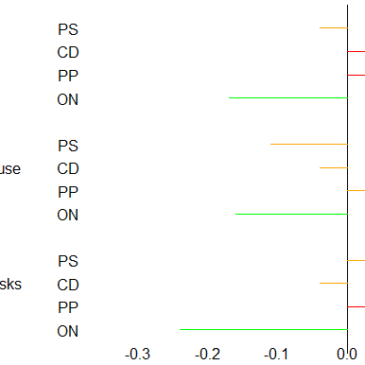College students who strive for high grades have a variety of overlapping reasons for studying and working hard. For some, college is a stepping stone to graduate school or a professional program, and a stellar transcript is crucial to getting into a top program. For others, the motivation to achieve is a byproduct of talent or interest in the subject matter. For others, it’s a matter of perfectionism. Regardless of the reason, the drive for academic performance can lead some to use cognitive enhancers (“smart drugs”) like Ritalin and Adderall. In this week’s STASH, we review a study by Joachim Stoeber and Sarah Hotham that explores possible associations between aspects of perfectionism and attitudes about cognitive enhancer use.
What was the research question?
Are different aspects of perfectionism (e.g., parental pressure and expectations, need for neatness and organization) associated with positive or negative attitudes towards cognitive enhancer use?
What did the researchers do?
The researchers used data from 268 students recruited through a university research participation program. The participants rated themselves on items related to four aspects of perfectionism: personal standards, concern over mistakes and doubts about actions, parental expectations and criticism, and need for organization and neatness. The participants also answered questions about whether they had generally had a positive attitude about cognitive enhancer use, whether they believed that it was moral to use cognitive enhancers, and whether the benefits of cognitive enhancers were worth potential temporary or permanent side effects. The researchers calculated correlations to measure the associations between the students’ levels of perfectionism and their views on cognitive enhancers.
What did they find?
As Figure 1 shows, those who were more concerned with making mistakes and those who felt parental pressures were more likely than others to have positive views of cognitive enhancers. Those who felt parental pressure also were less likely to be concerned with the potential harmful effects of cognitive enhancer use. Those who valued neatness and organization more were less likely to have positive views of cognitive enhancer use and less likely to consider cognitive enhancer use morally acceptable.
Why do these findings matter?
Studies like this one can help school administrators and peer advisors identify students who might be more likely to use cognitive enhancers as a temporary solution to the demands and stress of college academic workloads. Perhaps by talking to students about managing personal and parental expectations and about time management and organization, schools can decrease the number of students who risk long-term effects on their minds and bodies just to make it through the next test or paper.

Figure. Correlations between measures of aspects of perfectionism and responses regarding attitudes about cognitive enhancer use. Adapted from Stoeber and Hotham. (2016). Click image to enlarge PS: Personal standards, CD: Concerns and doubts, PP: Parental pressure, ON: Organization and neatness. Click image to enlarge.
Every study has limitations. What about this one?
The sample was predominantly female (87%), so it was not representative of all college students. Also in this study participants were asked about their attitudes towards cognitive enhancer use, not their actual cognitive enhancer use. Future studies should compare aspects of perfectionism and other personality traits to actual cognitive enhancer use.
For more information:
Click here for the National Institute on Drug Abuse’s statement on cognitive enhancer abuse.
— Matthew Tom
What do you think? Please use the comment link below to provide feedback on this article.





John French September 7, 2016
First, there is the general issue of using screening tests to identify deviant behavior and then apply action to those identified as deviant, and second, there is the use of this particular study to do it.
There is a whole field in tests & measurements devoted to screening tests. The classic example of the frailty of their use is the test which is 99% sensitive and 99% specific, applied to a population in which the behavior is 1 percent present. Roughly half of the positive test results will be false positives. To apply any treatment or prevention to a group in which half are not appropriate is highly
questionable. Of course, higher prevalence reduces the proportion of false positives, and lower sensitivity and specificity increase it, but the point is made.
Second, there is the use of this particular study to identify the deviant behavior. It is a non-random study with a highly skewed sample. Forget the validity of the test itself, and just look at the sample! Then, consider whether this study alone has enough evidence to allow any claim of validity. Of course it doesn’t.